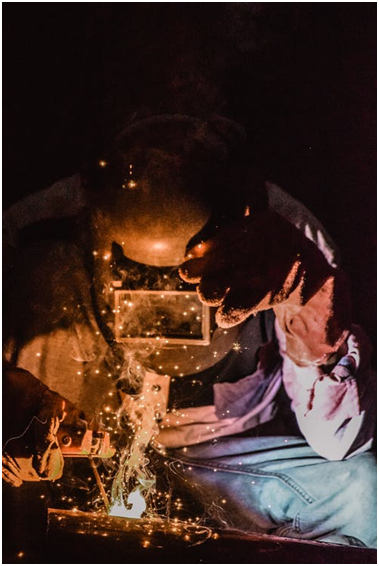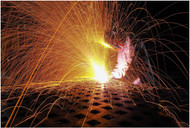All About 4/0 Welding Cable
23rd Feb 2022
If to you, “wire is wire,” and “cable is cable,” then this is not the article for you. There are many different types of specialty wire and cable on the market supporting all sorts of different processes. In this, we’re going to parse some of the finer layers of information that surround electrical wire and cable, specifically, 4/0 welding cable.
What Is Welding Cable Used for?
A welding cable is an electrical cable (which consists of many different conductors braided together) that is usually highly flexible and controls the electrode that powers welding equipment.
There are four main types of welding, being gas metal arc welding, flux-cored arc welding, shielded metal arc welding, and gas tungsten arc welding. These processes are used to join multiple pieces of metal together primarily using heat delivered through a welding process. Welding cable is essential to powering these operations as it is uniquely suited to the application.
Why Does Welding Cable Need to Be So Flexible?
One of the traits that defines welding cable is flexibility. One of the reasons that welding cables must offer a high degree of flexibility is because it is often necessary to use them in situ, on-site. There’s often little flexibility (no pun intended) with respect to where and when the welding must take place, so if it must be done outdoors on a job site, on an architectural structure with little protection from the elements, then so be it.
The other reason is that some welding cable is also very thick in order to operate at the voltage

and ampacity levels required for the specific job. The thicker a cable becomes, the less flexible it will be. Consequently, welding cables are typically made with a higher number of individual electrical conductors to improve their flexibility. For example, our highly flexible 4/0 welding cable contains over 2000 strands - 2014, to be precise!
What Determines Voltage Rating and Current Capacity?
Conductor material and wire thickness are the two traits that primarily determine a wide or cable’s ability to carry current at a specific voltage. Our welding cables are made from pure copper conductors (as is customary, as copper is an excellent electrical conductor) and rating according to American Wire Gauge.
The thicker the wire, the less resistance it will offer and all things considered, the more effectively it will be able to carry a current and work with a higher voltage (electrical potential energy).
Our 4/0 welding cable, for example, has a nominal diameter of .720 inches and is rated to 600 volts at operating temperatures between -50 and 105 Celsius.
It is important to remember, however, the American Wire Gauge is an inverse scale. That is, larger numbers typically correspond to smaller wire diameters. That is to say that 8 AWG wire is thicker than 10 AWG wire.
What Other Traits Does Welding Cable Possess?
Because welding cable is often used outside with little protection against the elements, it needs not only to be flexible but also to be highly resistant to a wide number of environmental stressors.
Our welding cable, for example, is made with EPDM rubber insulation and it is resistant to high temperatures and moisture (it’s weather-resistant) as well as a number of other stressors. It is abrasion-resistant and oil and gasoline-resistant as well.
EPDM rubber is also a very effective electrical insulator and is highly resistant to ozone, aging, and a variety of chemicals. In addition, it is considered to have decent physical strength.
These traits make it superior for use in unforgiving environments with a variety of chemical and mechanical stressors, making welding cables some of the toughest types of electrical cables on the market.
Can Welding Cable Be Used for Any Other Applications?
Many welding cables are not only good for providing a power supply to welding applications. For example, you may have noticed that our cables are produced with red and black insulation. This is no accident, as these cables are also highly suitable for use as battery cables.
In addition to serving as battery cables, these cables are also useful as leads for motors and generators and can be used with solar inverters as well. Often referred to as photovoltaic (PV) cable, solar panel cable must be primarily resistant to weather (moisture and temperature) as well as sunlight (UV-resistant) both of which our welding cables are.
Questions About Our Welding Cables?
Whether you’re looking for 4/0 welding cable or you’re not sure yet which electrical cables are most suitable for your purposes, we are always here and happy to help.
Please feel free to get in touch with us by phone or email at your convenience and we will help you answer any questions you may have. You can reach us at 800-262-1598.

